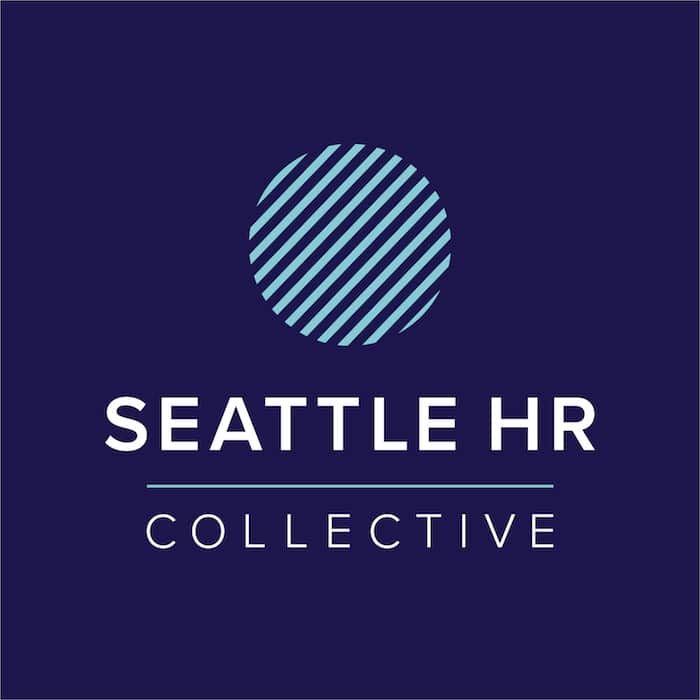The energy was buzzing at the last Seattle HR Collective MeetUp, the fourth in a series of monthly meetups featuring top Seattle area HR leaders. The meetups have a goal of elevating the status and impact of the Recruiting and Human Resources in the Seattle area. Word must be spreading because the turnout last time was the best to date.
We were proud to host Shannon Anderson, Director of Talent at Madrona Venture Group, a heavy-hitter in the talent industry and owner of a truly enviable shoe collection. Her clout was enough to almost double the attendance and raise the fashion standards of the event in one fell swoop. Shannon sat down with her friend, Recruiting Bandwidth CEO, Jennie Ellis, to talk about her secret sauce and how to take the recruiting industry beyond mere order taking to serving the strategic interests of the organization.
Shannon Anderson is a powerhouse. With more than 30 years recruiting under her belt, she spent nearly a decade with Microsoft during the hyper-growth years, spearheading the creation of their 50 person recruiting “Strike Team” and the recruitment machine that would follow. Later on, not only did she recruit early days for the online “bookstore” Amazon, but also Apptio, INRIX, and Google. She went on to lead talent for Ignition Partners. It’s not very difficult to see why Madrona Venture Group snatched her up as their new Director of Talent. Shannon has a remarkable ability balancing her intuition, creativity, and candor to make spectacular matches between talent and opportunity. She’s even more formidable in person: quick-witted and affable but tough where it counts and when she needs to be. She had the audience laughing from the start with a quick introduction and dove straight into the heart of the matter.
“The number one predictor of company success is their ability to recruit and retain talent.” She declared simply, proudly, understanding the veracity of the statement in a way few others really can. Shannon’s overarching goal as head of talent at Madrona is to nurture the talent ecosystem in their portfolio and in the Pacific Northwest as a whole—using a strategy of ‘fill the pond, teach to fish’ to leverage existing recruiting systems and organizations for knowledge on industry trends and then use this knowledge to advise executive teams and leaders on best possible recruitment and retainment practices. By combining the know-how of the region’s top talent, search partners, recruiting and HR firms, diversity consultants, tools and products vendors like Textio and Seekout, and anyone else invested and engaged in the local talent pools, the community grows together.
It’s not enough to wish this talent ecosystem into being—it takes work. As long as companies utilize these talent systems and organizations as mere order takers and retained personal shoppers, they lose out on game changing talent and long-term success. If you want to move beyond order taking and become a real player in your company’s future (and trust me, you do) Shannon broke down a few actions to point you in the right direction. First, remember that the company is the client, not the hiring manager—don’t let their personal project agendas dictate the best fit for the company as a whole. Level with the hiring manager rather than merely seek their approval. Equally important is to show up every day as a business person, to don the same clothes and use the same words as the very people you need to influence. It’s not enough to be a candidate whisperer, you have to acknowledge yourself as the steward of talent for the mission at hand (a mission governed by the company rather than the hiring manager breathing down your neck). Serve the highest good by showing up as a consultant, rather than an order taker. Choose to lead rather than follow—consult rather than react. In order to bring it all together, a successful talent advisor needs to bring the right data to the table and tune it specifically to the ears of the audience. Each member of the leadership team brings different problems and priorities with them into strategy meetings and has a unique perspective and it’s important to recognize these priorities and perspectives in order to address them.
The best recruiters are not looking to impress a hiring manager, they should be observing the company at an entirely different scale. A hiring manager, tasked with filling the gaps of their particular project needs, is going to see the forest for that one specific douglas fir thicket. This is all well and good (it’s their job, after all, to mind this) but it is not your job to support this hiring manager, it’s your job to elevate the company. Talent advisors must see the forest for the forest, and every move made—every hire, every fire—should reflect a larger macro-strategy. Bringing your ‘hero’ self to impress the hiring manager often results in failure in the long-term. Instead, become a steward looking out for the future of the entire company. In order to look out for the company, you have to understand it, both speak in the business language and drive the language itself. For example, instead of referring to ‘intake meetings’, which conjures up class order-taking, call it what it is, an alignment or strategy meeting which gives it the power it deserves. Make it clear to everyone involved that you are here to safeguard the company, it’s goals and strategy and that everyone seated at the executive table has different priorities and roles to play.
This is where talent advisors have to shine: alignment and strategy meetings. This is the table to which you bring data that not only backs up your talent initiative but is also catered to each leadership position and their priorities. It’s important to know what data appeals to which aspect of the company. For example, CEOs want to know the broad strokes like general improvement and growth percentages. CTOs want to know the black and white of what things are being done and how they are working. CFOs just want to know how much it’s going to cost and they WANT to delve into the details. HR has a real place at this table as well, and likes to keep an eye on who is impacted by initiatives and in what ways. As a talent advisor it’s important to bring the right data to the right people and present it in such a way that caters to the needs of leaders of disparate company sectors. To do so both takes care of various problems and shows the boardroom that you have the best interests of the entire company in mind. Don’t just bring all the data (massive spreadsheets are conducive to glazed eyes, daydreaming about lunch, and not much else), the data has to tell a cohesive story. Bring the insights gained from it in order to present the right thing to the right person.
Shannon Anderson surely knows her business by now but there is no success without regret, and she shared her own powerful stories of what not to do as well. When asked about what she would do differently in her early career if she could, she smiled astutely. “I should have left my hero at the door,” she admitted easily before adding, “and my fear.” There would have been no intake meetings—only alignment meetings to determine the future of the company and what problems needed to be solved with what hires. She would have wanted to be armed with statistics detailing not only the benefits of a hire but the consequences of a mis-hire. She would make a concerted effort to lock down SLAs (service level agreements) that allow for course correction and iteration as often as was necessary to nail a hire and which set up clear expectations and milestones. She would have shown up differently, as a leader instead of waiting to take an order.
So now it’s up to us to learn from her mistakes.
Guest Author: Seattle HR Collective “We are passionate about helping to build and support strategic and effective HR leaders. We are a startup friendly HR community that provides professional development beyond the basics of HR in the form of training, best practices, guest speakers as well as networking. We want to fill the gap for HR leaders and small companies.”














